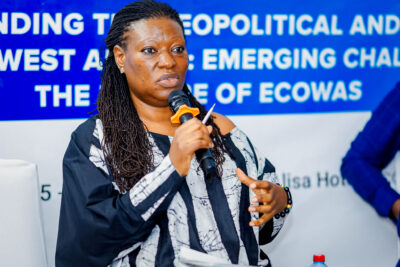When I first taught Shahzad Bashir’s interactive book, A New Vision for Islamic Pasts and Futures, my students found it disorienting. Even though the book is organized in seven chapters and follows the conventional format of academic monographs that include an introduction and an epilogue, its digital form invited an open-ended exploration that was new to students. A reader can select a specific point of entry and move back and forth or sideways. It was this freedom to construct their own narrative of Islam, centered on their interests, that made my students uneasy: “But history is an authoritative account,” “Islamic history should begin with the birth of Prophet Muhammad.” “What makes this history Islamic?” they asked. From the onset, Bashir’s work encourages us to ask questions about knowledge and power: Who has the authority to define and write history? When does Islamic history begin? Whose beginning is it? What constitutes Islam?
Bashir argues that Islam is “a matter of naming rather than substance.” When we “imagine Islam anew” in this way, we recognize its multiple expressions without privileging any one expression over the other. We are able to move away from orientalist and theological articulations of Islam that tie it to some ideas, expressions, and sites at the exclusion of others. Bashir’s nominal approach to Islam also leads him to conclude that Islam is made by Muslims and non-Muslims alike. Anyone who describes or engages with it contributes to its creation. Islam is both a phenomenon and a discourse.
Bashir’s approach is not an arrogant refusal of historical narratives that are cherished by scholars and Muslims alike. Rather, it is an invitation to plurality—to multiply and let proliferate what we understand as Islamic, to remove Islam from the confines of categories of thought imposed by those in power (whether European colonizers or contemporary nation-states), and to account for histories that have always unfolded beside grand narratives but have never found a place in them, such as those of women or Shi’a minorities. On display in A New Vision for Islamic Pasts and Futures is a will to capaciousness, inclusive of many space-time horizons that have been neglected in linear renderings of Islam.
As an experiment, the book is a first step in crafting alternative histories. It does not desire comprehensiveness; comprehensiveness is what the master desires. Bashir’s book, by contrast, takes us on some journeys, teaching lessons about content as well as method, so that we can create our own histories. Such histories will inevitably differ from Bashir’s, as they will be crafted from the readers’ own vantage points. Bashir thus transforms readers into interpreters, historians in their own right. Perhaps that is what confounded my students, so attuned to “authoritative history,” at first.
Bashir’s book is partial, for his intention is to teach us that all knowledge-making practices are partial endeavors. Since Islam and time are human constructs, they can be interpreted, arranged, and even fixed in multiple forms. The book performs this argument by giving readers the ability to experience interpretive variability: to move in time not just linearly, but also through other routes. The book’s interactive form hence is closely connected to the book’s argument. Consider the table of contents. It is available in the conventional textual format, but also in a visual design taking the form of constellations. Pursuing these constellations allows the reader to break away from a prescribed sequence and skip to parts of the book that resonate thematically with the topic under consideration. While a reader is free to move around the text at will, there are multiple pathways provided—some are traditional and well-trodden (textual chapters and sections) and others are more akin to wide expanses within which multiple less-traveled paths can be explored (major and minor stars placed in a web-like formation).
The format of the book, with the variety of pathways available for navigating the web, resists closure and refuses to give readers a beginning and an end. These features are intentional. They cohere with Bashir’s politics. In the introduction, he explains: “I seek to decenter Islam from a geographical identification with the Middle East, articulation through men’s authority alone, and the presumption that premodern expressions are more authentically Islamic than those contemporary to us.” And so, Bashir advocates that “all expressions pertaining to Islam are taken seriously.” These include not just dominant expressions, which center texts, theology, and civilization, but also articulations of Islam through material culture, folk stories, food, talismanic texts, novels, and graffiti. Instead of presenting an internally coherent or systematic view of Islam, this move makes it possible to celebrate diversity, gaps, and the contradictions that are part and parcel of the human experience.
We are able to see how multiple temporalities and stories are embedded in a single object. Bashir’s discussion of a mihrab (the niche that indicates direction of prayer by pointing to Mecca) at a Friday mosque built in Isfahan during the rule of the Mongol Ilkhanid dynasty in the early fourteenth century illustrates this beautifully. Through a close reading of the text that adorns the mihrab, as well as analyses of the event of its construction and different people’s engagements with the site over centuries, Bashir directs attention to the different temporalities embedded in its form, inscriptions, decorations, and construction. Each of these elements tells a different story. The Arabic script harkens to Islam’s transnational influence, whereas the names of the rulers at the center situate the mosque within the specific regime of power that sponsored its construction. We can draw out other stories by reading narratives of how people interacted with the mosque, interactions that cannot fully be captured by the intentions of its sponsors. For Bashir, the “mihrab substantiates Islam simultaneously in multiple dimensions of time, made of an illimitable array of events and narratives.” This approach to the mihrab teaches us that multiple pasts are immanent in the present and that the present in turn is constructed under the gaze of the future, as Margrit Pernau has also shown.
Bashir directs readers to think about time in multitudinous ways and prompts them to understand linear time as only one of its articulations. Consider Bashir’s engagement with a narrative about resurrection that involved a small Nizari Ismaili Shi’a community living in a mountain fortress in northern Iran. In 1164 CE, the Nizari Imam declared qiyamat, an event that marks the end of time itself. This event, Bashir notes, can be interpreted as a fraud in hindsight, because time—as we know—has not ended. But Bashir compels us to ask: Are other interpretations of this event possible if we were to rethink our understanding of time? What dimension of time did indeed end in 1164?
Bashir explains that the declaration of qiyamat, for Nizari Ismailis, marked a spiritual event when the true nature of existence was revealed. Since Ismailis understood the present Imam to be a portal through contingent, relative, time-bound modes of existence, the assertion of qiyamat by the Nizari Imam was an assertion about his own manifestation, made by one who had been present in all times but whose presence was hidden. Bashir’s close reading of Ismaili as well as non-Ismaili sources, and a desire to tell history from within the perspective of Ismailis, lead him to arrive at a different interpretation of an event that has long been used to mark Ismailis as heretics. We learn that history looks different depending on the spatiotemporal position from which it is imagined.
A New Vision of Islamic Pasts and Futures invites readers to collaborate with the author in ways that conventional scholarly books do not. Consider the audiovisual content of the book. A reader can click a still image to enlarge it and activate a magnifying tool to consider the details more closely. She can pause and listen to a video, which at times prompts exploration of similar content on the web, meaning that the reader may leave a particular textual thread. This is intentional, as Bashir wishes to give the reader an ability to craft her own learning journey. He says: “The book’s edges are expandable, their management left to the reader’s discretion rather than being dictated by the author.” The author and reader come together in this experiment as thinking partners, following learning trajectories that may have been defined by the author initially but certainly do not remain constrained by him.
But this freedom can also be jarring; it was for some of my students. The fact that the first chapter did not begin with a traditional opening account of Mecca and the birth of the Prophet made some students particularly uncomfortable. Consideration of women, Sufis, shrines, or an emphasis on places outside the Middle East, also called on students to rethink what should figure in a lesson on Islamic history. Experimental books like Bashir’s call into question sedimented ways of doing and learning Islamic history, and in this sense extend an invitation to unlearn and undo. Students ultimately appreciated the opportunity to study Islam through texts and objects, memories and postmemories, painting and graffiti. Bashir’s nominal approach invited them to understand that Islam is constructed not only by Muslims but also those who do not identify as such. This awareness prompted further reflections on the role of US empire and foreign policy in the making of Islam. In the context of American universities, such an approach can engender deep understanding about Islam and Muslim societies, and identify connections that have remained obscure.












